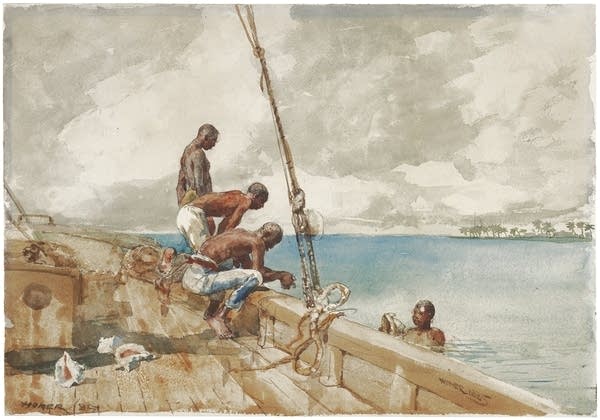MIA presents seldom-seen masterworks

The Minneapolis Institute of Arts has more than 2,600 watercolors, drawings and pastels and in its collection, but they don't often get to see the light of day.
"Marks of Genius," a new exhibition at the MIA, is part of an effort to get more of those works on the walls and in front of patrons.

Associate Curator of Prints and Drawings Rachel McGarry says the exhibition represents a cross-section of the museum's finest works on paper.
"When I first joined the museum I had no idea what treasures I'd find," said McGarry, "so I started digging through storage. We vetted the collection – we found fakes, we found mold – and we got the collection in order."
Create a More Connected Minnesota
MPR News is your trusted resource for the news you need. With your support, MPR News brings accessible, courageous journalism and authentic conversation to everyone - free of paywalls and barriers. Your gift makes a difference.
What they found included works by Henri Matisse, Egon Schiele, Edgar Degas, Georgia O'Keefe, Winslow Homer, and Amedeo Modigliani, among others.

McGarry says the MIA has also been making some key acquisitions to augment its already extensive collection, a few of which became last-minute additions to the show.
"Drawing is the most universal art -- from stone age cave paintings to every two year old who picks up a crayon -- to be human is to draw. It's a universal art that we all understand, and until the 1950s it was the foundation of every artist's practice."
The exhibition is organized thematically, from detailed botanical drawings to imaginative children's book illustrations to abstract minimalism, spanning five centuries.
While McGarry said all the works are masterpieces, Egon Schiele's "Standing Girl" stands out.

"It is just a really special drawing," said McGarry. "When we brought her up through the galleries, everybody stopped and watched her go by. It's the wisdom of crowds –- people know a masterpiece when they see it."
The piece, which is Schiele's largest surviving drawing, was composed on simple brown butcher paper.

McGarry said she hopes the exhibition will inspire a renewed public interest in drawing. In conjunction with the exhibition, the MIA has created a drawing studio in an adjacent gallery, where patrons can put their own hands to the test. On Thursday evenings they bring in artists to offer demonstrations, lessons and talks about the artistic practice.
McGarry suggests that now is the perfect time for drawing to come back in vogue.
"With all the technology available to us, picking up a pencil and drawing is a bit rebellious," said McGarry. "It's like eating local and having the backyard garden -- it's artisanal in a way."
"Marks of Genius" runs through September 21.